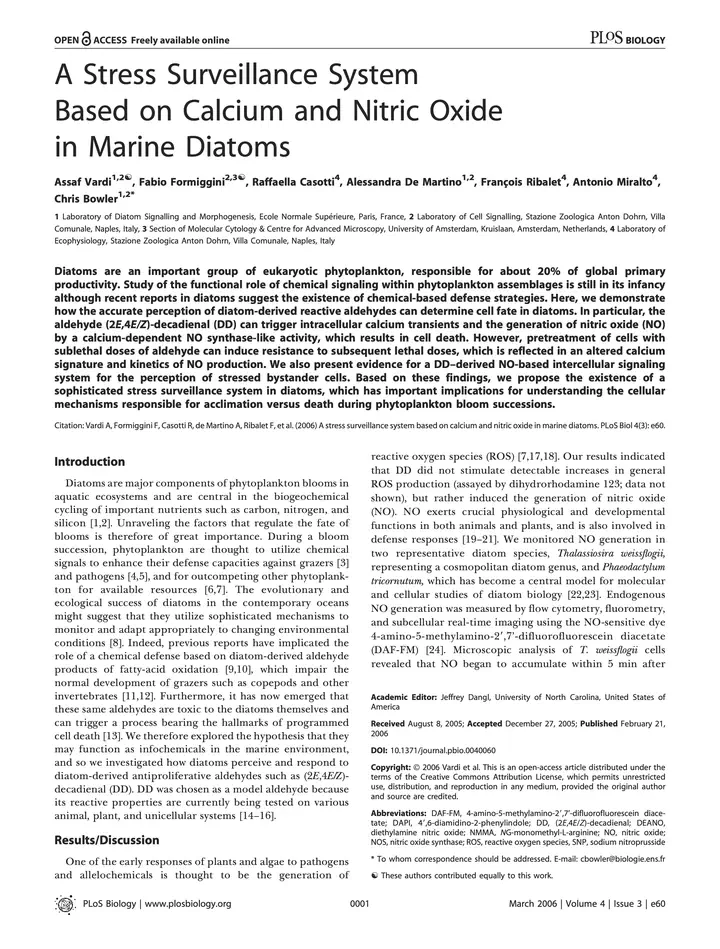
Abstract
Diatoms are an important group of eukaryotic phytoplankton, responsible for about 20% of global primary productivity. Study of the functional role of chemical signaling within phytoplankton assemblages is still in its infancy although recent reports in diatoms suggest the existence of chemical-based defense strategies. Here, we demonstrate how the accurate perception of diatom-derived reactive aldehydes can determine cell fate in diatoms. In particular, the aldehyde (2E,4E/Z)-decadienal (DD) can trigger intracellular calcium transients and the generation of nitric oxide (NO) by a calcium-dependent NO synthase-like activity, which results in cell death. However, pretreatment of cells with sublethal doses of aldehyde can induce resistance to subsequent lethal doses, which is reflected in an altered calcium signature and kinetics of NO production. We also present evidence for a DD-derived NO-based intercellular signaling system for the perception of stressed bystander cells. Based on these findings, we propose the existence of a sophisticated stress surveillance system in diatoms, which has important implications for understanding the cellular mechanisms responsible for acclimation versus death during phytoplankton bloom successions.